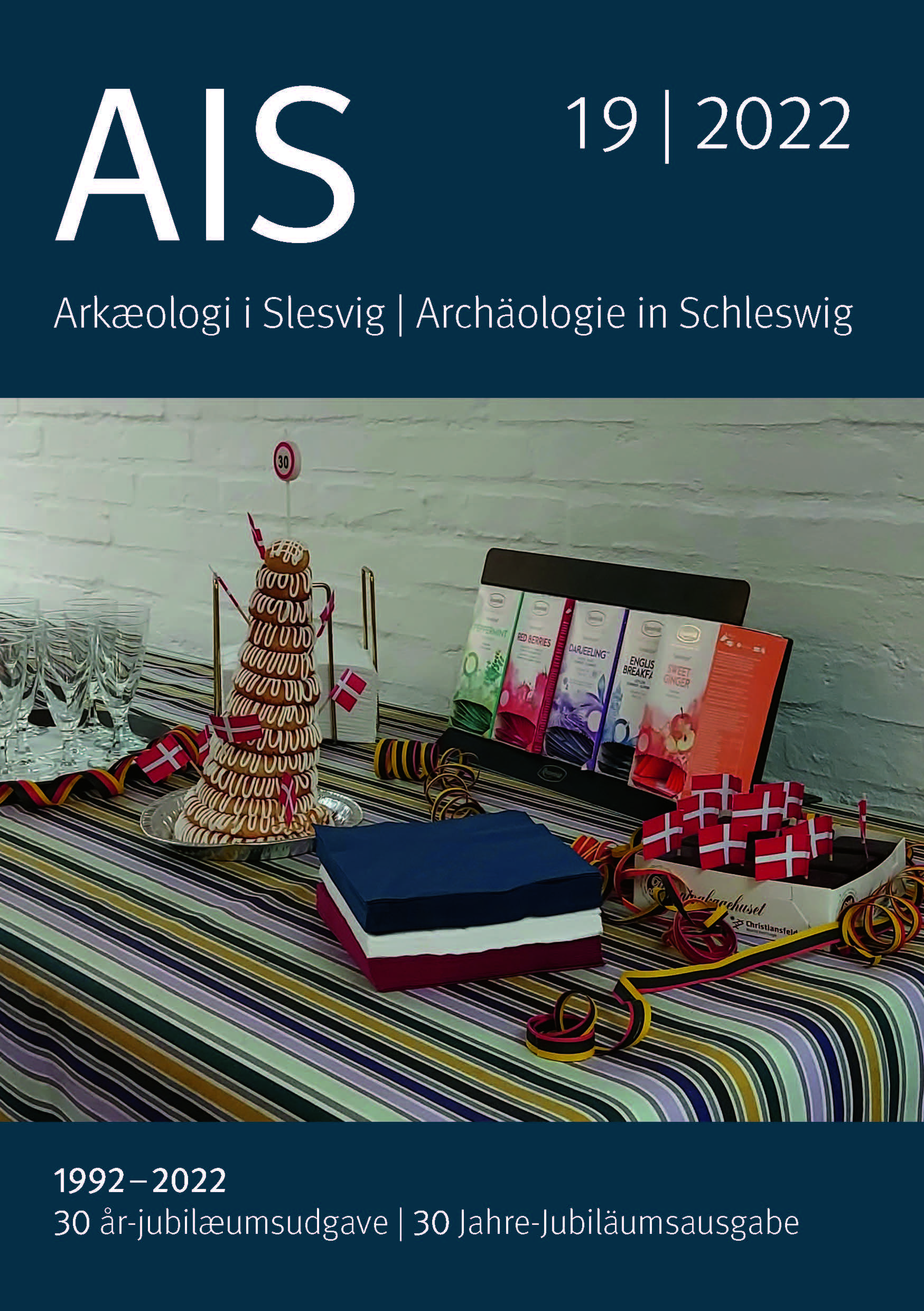Ein eisenzeitlicher Hofplatz mit erhaltener nutzungszeitlicher Laufoberfläche in einem Dünental auf der Insel Amrum (Nebel LA 431)
Overgangen mellem sten- og bronzealderen ved Revsinggård II
Abstract
The western part of the North Frisian island
of Amrum is characterized by a wide
area of sand dunes. Beneath the dunes
the old geest landscape with prehistoric
settlement sites and burial grounds
is preserved. At the wind exposed site
Nebel LA 431 near the duck decoy Meeram
uncovered structures were documented
and small exploratory excavations
were carried out between 2020 and 2022.
Using modern methods, a farmstead of
the late pre-Roman Iron Age / early Roman
Imperial Period is being investigated
here. Several settlement sites had already
been documented by Hans Hingst in the
1960s and 1970s in the nearby surroundings.
The former occupation layer of the
settlement is characterized by extensive
stone pavements. These are partly covered
by a massive cultural layer containing
burnt clay, marine clay, charcoal, and
numerous pottery sherds. In addition
to a courtyard pavement preserved over
an area of about 25 m², in which a large
pit and a fireplace are embedded, it was
possible to document at least two socalled
manure gutters, carefully set out
of stones and representing the longitudinal
central passage in the livestock barn
section of the longhouse. Several oval
hearths, paved and partly covered with a
clay mantle, indicate the living part of the
house. Intensive traces of fire in the living
quarters suggest that this part of the
house had to be renewed at least once and
that several settlement phases presumably
overlap here. Furthermore, an old soil
with Neolithic flint artifacts beneath the
Iron Age settlement layer indicates older
settlement phases.
Veröffentlicht
Zitationsvorschlag
Ausgabe
Rubrik
Lizenz
Copyright (c) 2023 Tidsskrift og forfatter

Dieses Werk steht unter der Lizenz Creative Commons Namensnennung - Nicht-kommerziell - Weitergabe unter gleichen Bedingungen 4.0 International.
Die Zeitschrift ist nicht dafür verantwortlich, Erlaubnisse von Dritten einzuholen, beispielsweise um Abbildungen bei evtl. Publikation des Materials.etc. zu benutzen.
Der Autor ist allein verantwortlich für alle Rechte bezüglich Kartenmaterial, Fotos, Zeichnungen und andere graphische Elemente.
Das copyright für die Artikel liegt bei den Autoren und der Zeitschrift.
Autoren, die Ihre werken in dieser Zeitschrift publizieren, akzeptieren folgende Bedingungen:
Open Access: Der Autor behält die Ursprungsrechte und erlaubt der Zeitschrift die Erstpublizierung.





